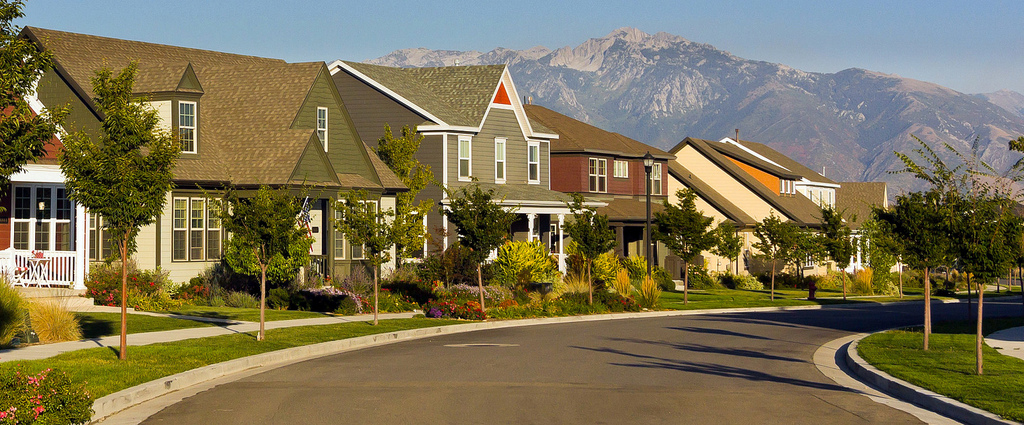The history of public housing in the United States is complicated, with good intentions to assist low-income individuals and families often being inadequately planned and implemented. The large public housing developments of the 1950s concentrated and isolated low-income residents in distressed urban areas. The HOPE VI program, enacted in 1992, de-concentrated poverty through the use of mixed-income buildings but failed to address associated issues of poverty. A new initiative, Choice Neighborhoods, aims to strengthen low-income areas by creating neighborhoods of opportunity.
The Choice Neighborhoods program was introduced in 2010 as a response to the HOPE VI program. The Choice Neighborhoods vision is to redevelop public housing projects while also transforming the neighborhoods surrounding the housing developments. It targets three areas: housing, people, and neighborhood. Creating quality affordable housing, providing strong supportive and relocation services, and supporting economic development are the main goals of the initiative. Choice Neighborhoods also requires collaboration between different community agents, including local government, non-profit organizations, private developers, community members, and schools. It aims to give residents more voice in the decision-making process in order for them to feel comfortable with the changes in their neighborhoods.
A common phrase in discussions surrounding Choice Neighborhoods is “communities of opportunity”. The overall goal of Choice Neighborhoods is to move beyond housing in order to create sustainable neighborhoods that will benefit all aspects of a resident’s life. While safe, affordable, and quality housing is a large factor in improving one’s life, it doesn’t address additional needs of employment, education, healthy food, and transportation, among others. A community of opportunity is one in which all the resources needed in everyday life are in the area in which a person lives.
The Choice Neighborhoods initiative builds on the successes of HOPE VI but works to expand on the limitations of the program. The goals of HOPE VI aimed to de-concentrate poverty, alter the shape and design of buildings, provide supportive services to residents, maintain high standards of personal responsibility for residents, and establish partnerships between public and private sectors. Public housing complexes were demolished and mixed-income buildings with New Urbanism design style were built in their places.
The HOPE VI program has garnered mixed responses from residents and researchers. Building design and quality have improved, and the mixed-income developments and reduction of units has positively contributed to the de-concentration of poverty. Supportive and relocation services were often not organized at sites, leaving many residents without case workers and assistance. There has also been difficulty in moving middle-income residents into the mixed-income communities because of the lack of quality amenities in the area.
HOPE VI succeeded in de-concentrating poverty in a low-income area but did not facilitate the growth of that community through economic development or community collaboration. As a result, the neighborhoods continue to be undesirable to people of all income levels and community leaders struggle to make them strong and vibrant. Choice Neighborhoods plans to address this failure of the HOPE VI program by requiring strong neighborhood collaboration and allowing private and public partnerships to create economic growth.
Overall, the Choice Neighborhoods project aims to revitalize all aspects of distressed neighborhoods in order to strengthen communities and make them more desirable for all people. When a community is strong and vibrant, it draws people of all income levels and races. Everyone wants to live in a neighborhood with quality schools, a nearby hospital, ample transportation options, employment opportunities, engaged civic leaders, green space, a commercial district, healthy food options, and community safety. Healthy neighborhoods with the above qualities are often the types of communities that are integrated because all people want the same things in a community. Therefore, developing strong neighborhoods of opportunity is the first step in becoming an integrated community.
Choice Neighborhoods is a promising next phase in public housing, learning from previous federal housing programs and adjusting to address the full set of needs of low-income people. Many cities that have already received Choice Neighborhood funds are using the grant to support programs and housing developments that were previously planned. Others are working with public and private groups and residents to create a comprehensive plan of neighborhood revitalization. These preliminary results of the Choice Neighborhoods initiative are encouraging. Hopefully, ongoing collaboration among people and groups who are invested in a community will lead to the development of sustainable neighborhoods of opportunity.
By Casey Griffith, Research and Outreach Coordinator

